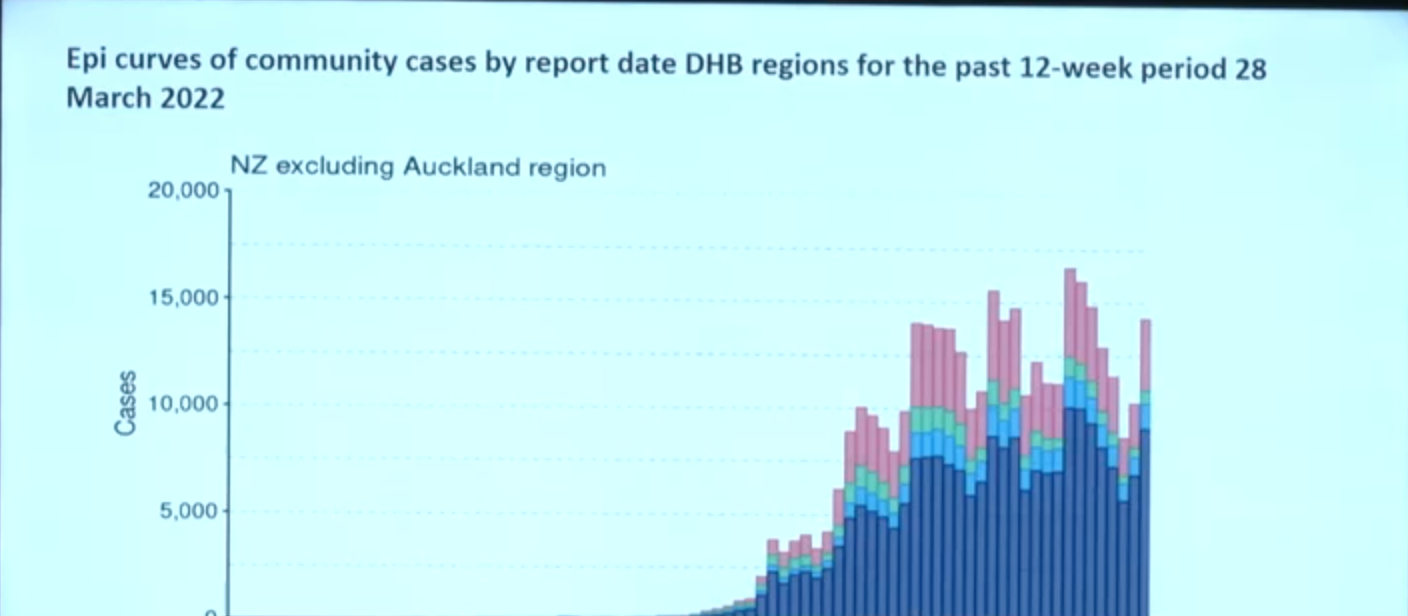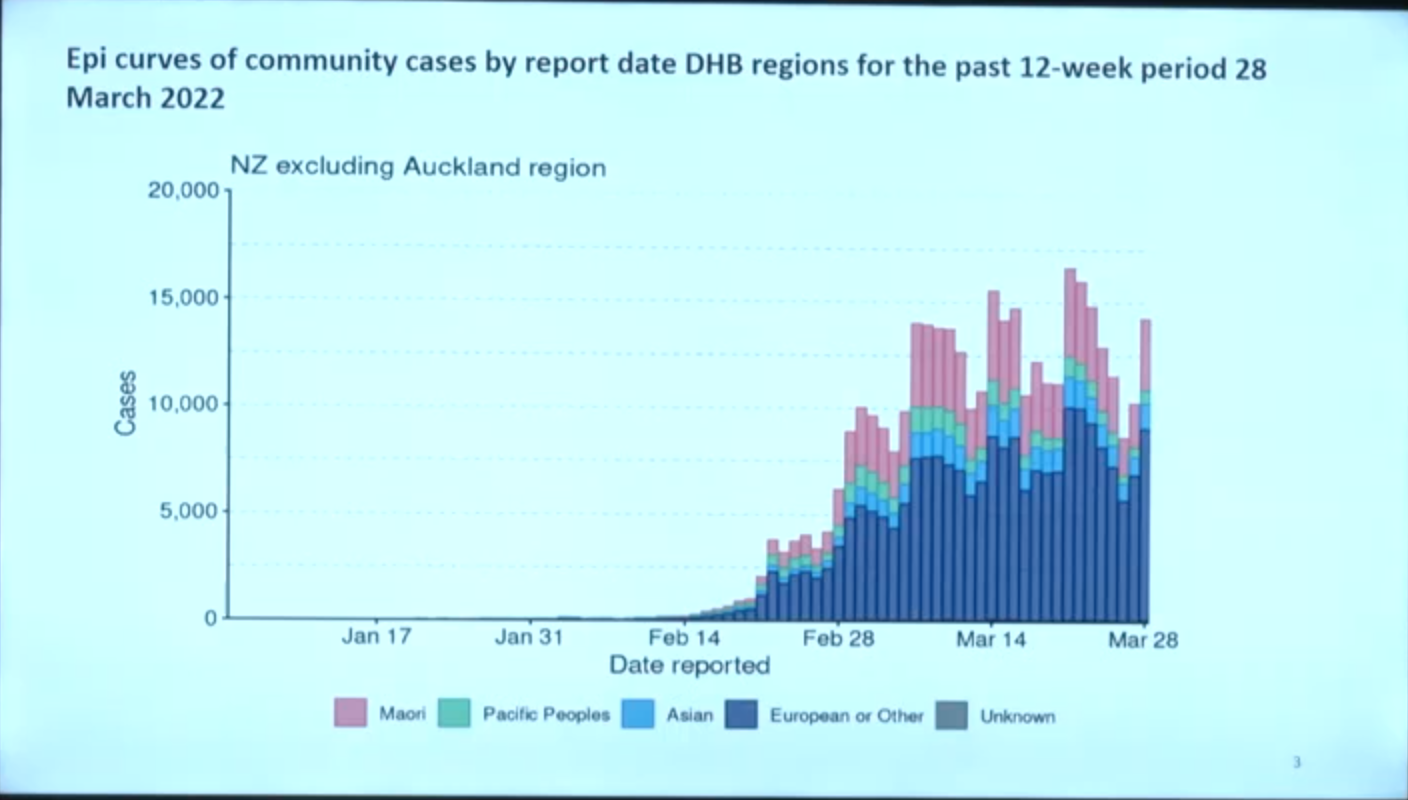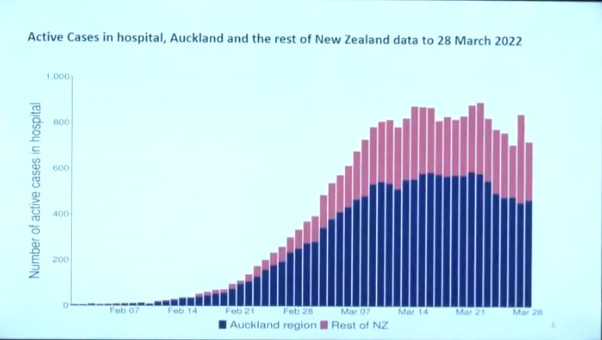Respiratory physician Lutz Beckert considers chronic obstructive pulmonary disease management, including the prevention of COPD, the importance of smoking cessation and pulmonary rehabilitation, and the lifesaving potential of addressing treatable traits. He also discusses the logic of inhaler therapy, moving from single therapy to dual and triple therapy when indicated, as well as other aspects of management
Return focus to business as usual after Easter
Return focus to business as usual after Easter

What we don’t want to do is have general practitioners and their practice nurses spending time writing out medical certificates for people who are essentially now well
General practice should be looking to return their focus from COVID-19 management to more “business as usual” after Easter, Ministry of Health care in the community lead Joe Bourne told today’s Omicron update.
“After Easter we may still see significant numbers of COVID cases, but it will become more normal within our communities,” says Dr Bourne, a specialist GP.
“We do have to start reprioritising our efforts to make sure we look after chronic diseases, which also have a significant impact on people’s health.”
He told the briefing that general practice’s smaller workforce means it doesn’t take many people off work to have a significant impact on services.
Dr Bourne also acknowledged the pressure practices were under because of the “very high level" of patient contact resulting from the high number of COVID-19 cases in the community.
“I just want to acknowledge the mahi that is involved in providing the care that people need.”
But he says it is also time to start planning how to return after Easter to doing the “valuable work that happens within the primary care setting every day”.
“We will be encouraging people to start reconnecting with general practices and utilising the services as they would prior to the pandemic."
That includes encouraging people who missed mammograms or a cervical smear to get in touch.
People with a long-term condition, such as heart failure or type 2 diabetes, will be asked to engage with their practice “to make sure that all the necessary checks are done so those conditions are managed as well as possible”.
There will also be a need to bring children in to catch up with immunisations, particularly with the upcoming reopening of the borders and the increased risk of the return of measles and whooping cough. “And, lastly, we will be working across primary care, particularly with community pharmacy, to ensure everybody who needs a flu vaccination will be able to get that.”
Dr Bourne acknowledged that general practice is still not operating as usual, using car parks as waiting rooms, for example, and with the requirements for masks, but these are to protect people vulnerable to COVID-19.
“We ask people to respect those wishes and respect the staff who are purely trying to protect not only the staff within the clinic but also the more vulnerable people within the clinic environment.”
Dr Bourne also made a call to businesses to not ask staff who have been isolating for COVID-19 for medical certificates before they can return to work "unless really necessary". But instead use the official text, sent to patients to mark the end of their isolation period, as proof they had been off work due to COVID-19.
“What we don’t want to do is have general practitioners and their practice nurses spending time writing out medical certificates for people who are essentially now well.”
Director of public health Caroline McElnay told today’s briefing that the graph of Auckland community case numbers shows a “very distinct peak” with numbers now falling back to the levels of mid-February.
Dr McElnay says this contrasts with the graph of community cases outside of Auckland (see graph at top of article) that also shows daily fluctuations but has a less obvious decline in case numbers.
The “Auckland excluded” graph shows a spike in case numbers on Tuesdays, repeated today, but the ministry expects the numbers to trend downwards again over the week.
“The only DHBs to report an increase in cases are the South Island DHBs, along with Taranaki, MidCentral and Whanganui,” she told the briefing.
Dr McElnay says that shows the rest of the country is a couple of weeks behind Auckland and “gives a signal of where we hope to be in the next two weeks”.











![Barbara Fountain, editor of New Zealand Doctor Rata Aotearoa, and Paul Hutchison, GP and senior medical clinician at Tāmaki Health [Image: Simon Maude]](/sites/default/files/styles/thumbnail_cropped_100/public/2025-03/Barbara%20Fountain%2C%20editor%20of%20New%20Zealand%20Doctor%20Rata%20Aotearoa%2C%20and%20Paul%20Hutchison%2C%20GP%20and%20senior%20medical%20clinician%20at%20T%C4%81maki%20Health%20CR%20Simon%20Maude.jpg?itok=-HbQ1EYA)
![Lori Peters, NP and advanced health improvement practitioner at Mahitahi Hauora, and Jasper Nacilla, NP at The Terrace Medical Centre in Wellington [Image: Simon Maude]](/sites/default/files/styles/thumbnail_cropped_100/public/2025-03/2.%20Lori%20Peters%2C%20NP%20and%20advanced%20HIP%20at%20Mahitahi%20Hauora%2C%20and%20Jasper%20Nacilla%2C%20NP%20at%20The%20Terrace%20Medical%20Centre%20in%20Wellington%20CR%20Simon%20Maude.jpg?itok=sUfbsSF1)
![Ministry of Social Development health and disability coordinator Liz Williams, regional health advisors Mary Mojel and Larah Takarangi, and health and disability coordinators Rebecca Staunton and Myint Than Htut [Image: Simon Maude]](/sites/default/files/styles/thumbnail_cropped_100/public/2025-03/3.%20Ministry%20of%20Social%20Development%27s%20Liz%20Williams%2C%20Mary%20Mojel%2C%20Larah%20Takarangi%2C%20Rebecca%20Staunton%20and%20Myint%20Than%20Htut%20CR%20Simon%20Maude.jpg?itok=9ceOujzC)
![Locum GP Helen Fisher, with Te Kuiti Medical Centre NP Bridget Woodney [Image: Simon Maude]](/sites/default/files/styles/thumbnail_cropped_100/public/2025-03/4.%20Locum%20GP%20Helen%20Fisher%2C%20with%20Te%20Kuiti%20Medical%20Centre%20NP%20Bridget%20Woodney%20CR%20Simon%20Maude.jpg?itok=TJeODetm)
![Ruby Faulkner, GPEP2, with David Small, GPEP3 from The Doctors Greenmeadows in Napier [Image: Simon Maude]](/sites/default/files/styles/thumbnail_cropped_100/public/2025-03/5.%20Ruby%20Faulkner%2C%20GPEP2%2C%20with%20David%20Small%2C%20GPEP3%20from%20The%20Doctors%20Greenmeadows%20in%20Napier%20CR%20Simon%20Maude.jpg?itok=B0u4wsIs)
![Rochelle Langton and Libby Thomas, marketing advisors at the Medical Protection Society [Image: Simon Maude]](/sites/default/files/styles/thumbnail_cropped_100/public/2025-03/6.%20Rochelle%20Langton%20and%20Libby%20Thomas%2C%20marketing%20advisors%20at%20the%20Medical%20Protection%20Society%20CR%20Simon%20Maude.jpg?itok=r52_Cf74)
![Specialist GP Lucy Gibberd, medical advisor at MPS, and Zara Bolam, urgent-care specialist at The Nest Health Centre in Inglewood [Image: Simon Maude]](/sites/default/files/styles/thumbnail_cropped_100/public/2025-03/7.%20Specialist%20GP%20Lucy%20Gibberd%2C%20medical%20advisor%20at%20MPS%2C%20and%20Zara%20Bolam%2C%20urgent-care%20specialist%20at%20The%20Nest%20Health%20Centre%20in%20Inglewood%20CR%20Simon%20Maude.jpg?itok=z8eVoBU3)
![Olivia Blackmore and Trudee Sharp, NPs at Gore Health Centre, and Gaylene Hastie, NP at Queenstown Medical Centre [Image: Simon Maude]](/sites/default/files/styles/thumbnail_cropped_100/public/2025-03/8.%20Olivia%20Blackmore%20and%20Trudee%20Sharp%2C%20NPs%20at%20Gore%20Health%20Centre%2C%20and%20Gaylene%20Hastie%2C%20NP%20at%20Queenstown%20Medical%20Centre%20CR%20Simon%20Maude.jpg?itok=Z6u9d0XH)
![Mary Toloa, specialist GP at Porirua and Union Community Health Service in Wellington, Mara Coler, clinical pharmacist at Tū Ora Compass Health, and Bhavna Mistry, specialist GP at Porirua and Union Community Health Service [Image: Simon Maude]](/sites/default/files/styles/thumbnail_cropped_100/public/2025-03/9.%20Mary%20Toloa%2C%20Porirua%20and%20Union%20Community%20Health%20Service%20in%20Wellington%2C%20Mara%20Coler%2C%20T%C5%AB%20Ora%20Compass%20Health%2C%20and%20Bhavna%20Mistry%2C%20PUCHS%20CR%20Simon%20Maude.jpg?itok=kpChr0cc)